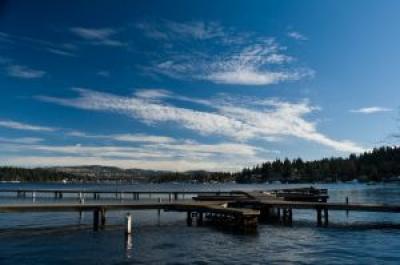History of Luther Burbank Park
Charles C. Calkins homesteaded the park in 1887. He founded East Seattle, an upper income residential community on the northwest side of the island. There he built the ornate Calkins Hotel, served by his own steamboat. His home was at Calkins Point, at the north end of the park. He lived until a family tragedy and the 1893 depression caused him to leave the community. About the same time, Major Cicero Newell and his wife organized a private school for boys and girls who needed parental care. Their Industrial School” at East Union and 35th Street in Seattle opened in 1890 and soon enrolled 18 children.
In 1901, the school board decided to buy 10 acres on Mercer Island, the Calkins homestead. Newell served as superintendent at the new school, overseeing the arrival of the first students in 1904. The next year, Willis Rand became superintendent, and developed a program of farm work and study at the Parental School over the next 36 years. Agriculturist James Johnson directed development of a self-sufficient farm of more than 100 acres.
“The boys of the school assist with the work in every department, in the cottages, kitchen and laundry.” Rand says in a 1911 report. “There is probably no department which furnishes a greater variety of interest than the horticultural work. In addition to the café and the horses, cows and general farm work which is entrusted to a few, each boy in the school has a small plot of ground for a garden, and during the spring and summer months an hour is spent every day by all the boys making an effort to “get back to the soil.”
Today’s brick buildings, which most recently housed King County Park System administrative offices, were built in 1929. The name of the Boys Parental School was changed to Luther Burbank School in 1931. Luther Burbank Park is named after the famous horticulturist born March 7, 1849 in Massachusetts. Burbank pioneered the hybridization of plants and “grafting” trees, and is credited with creating the baking potato and many flowers. He also created the Himalaya blackberry – loved by some for its luscious fruit, despised by others for its invasiveness. Ironically, many of Luther Burbank Park’s delicate native vegetation are choked with Himalaya blackberry bushes. Burbank passed away in 1926. The State of Washington took over in 1957, and moved the school operations to Echo Glen near Preston in 1966.
King County purchased the site in 1969 from the State of Washington for $1.6 million. Funding was provided by the Forward Thrust Bond issue approved in 1968, the State Interagency Committee for Outdoor Recreation (IAC), the State Park and Recreation Commission, and donations. The Mercer Island Community Center occupied the old dormitory building from 1970 to 1984, when the King County Park System took up residence. Centralized administration of maintenance, recreation, land management and marketing were most recently housed in the building until the end of 2002.
The outdoor amphitheater was rehabilitated in the 1980’s. The latest additions include a children’s play structure and an off-leash dog area. A regional bike trail along Interstate 90 connects the park to Bellevue across Lake Washington and downtown Mercer Island via a landscaped lid over the freeway. An undeveloped forested portion of the park continues south of the freeway.
On January 1, 2003, the City of Mercer Island officially took over the operation and maintenance of Luther Burbank Park. The transfer agreement for the park to the City of Mercer Island was approved and finalized on December 9, 2002.
Link to the Mercer Island Historical Society. Scroll to the bottom of the page and click on "The early settlement of East Seattle, a community on Mercer Island".

